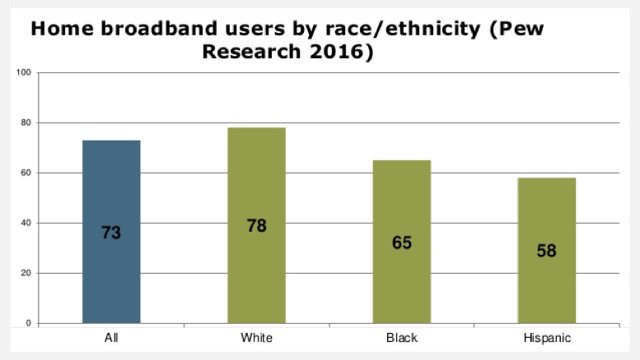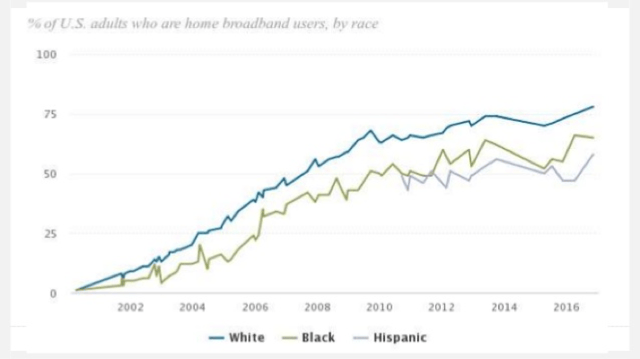Within the United States, racial equity is currently central to many conversations regarding policy in a variety of different spheres (education, politics, social justice). The relatively recent advent of the internet illustrates that the conversation of the intersection of racial equity and digital access is only just beginning. What does this mean for businesses and their digital media?
Access to Internet at Home
At the end of 2016, the Pew Research Center collected data analyzing how race and ethnicity affect access to internet within the home. According to their findings, 78% of White Americans had access to the internet within their home. Black and Hispanic Americans trail behind almost twenty points, averaging just over 60% surveyed had access to the internet.
The Pew Research Center also shows an upward trend in data for Hispanic American internet access within the home over time and a very recent downward trend for Black Americans.
Access to Internet Through Mobile
In comparison to in-home digital access, smartphone and mobile internet users by racial group paint a different picture. Pew Research shows an average of three quarters of White, Black and Hispanic Americans have access to a smartphone, thus showing a more equitable access of the internet through a mobile platform.
What does this all mean?
Taking in all this research, branching the digital divide means taking steps that requires you to meet your customer where they are to be able to connect with them. Taking in the patterns of minority Americans, a mobile friendly website fills the information gap of the digital divide, as well as opens up your business to a wider audience of Americans. Test your own website through Google or consult Media Garcia for mobile friendly ideas.
Media Garcia represents POC, women, LGBTQ-owned businesses! Want to chat more about making your website more accessible to those in your community?
Tags:
Marketing
April 10, 2017

